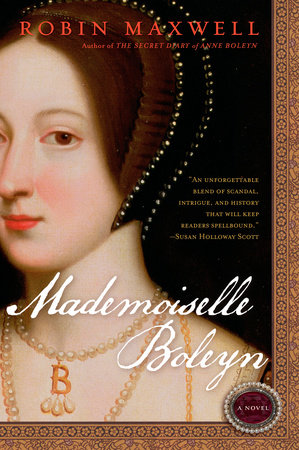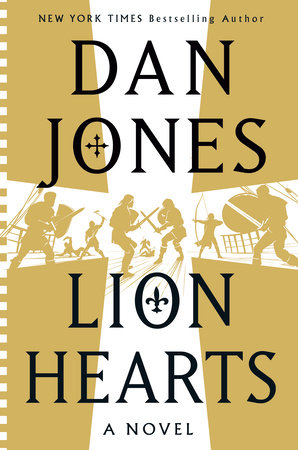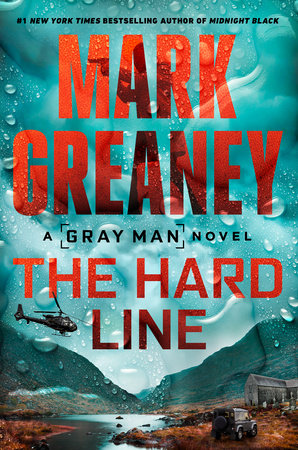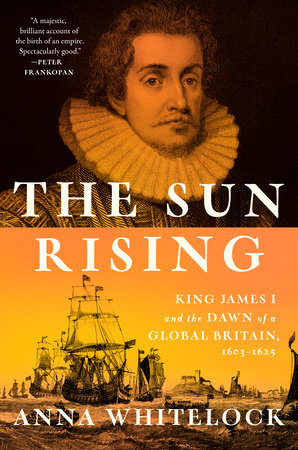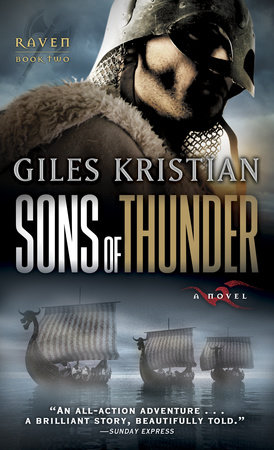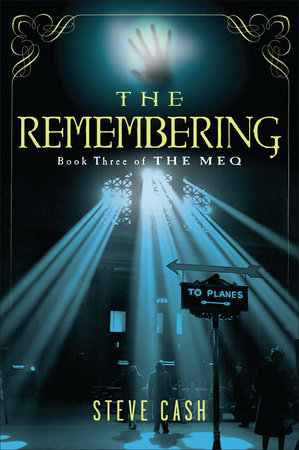Anne Boleyn is one of the most denigrated characters in English history and on the pages of recent works of historical fiction. Why did you choose to write not one, but two novels about her, and why did you perceive her in such a sympathetic light?
I’m always suspect when a figure in history is consistently portrayed either too scathingly or too well, which makes me want to do deep research and learn the other side of the story. Once I became aware of Anne Boleyn, I found her utterly fascinating, but so much of what was written about her was downright hostile. Even the best biographies had a faintly disapproving edge to them, and almost all of them described her as shrill, ambitious and scheming.
But I persisted, reading every word I could lay my hands on, and then trying to read between the lines. When studying history, you must always consider the sources, as virtually all of them are biased, especially the ones alive during the period written about. You have to understand what benefit or trouble they would derive from speaking well or ill or a certain person. Who they worked for. Who was paying their salary. In those days, "getting axed" from your job had far graver implications than it does today.
During the early years of her relationship with King Henry in England, and around the subject of Anne Boleyn’s much-requited love for Henry Percy, the only contemporary source who spoke of them was a person named George Cavendish. He was extremely disdainful about both Anne and Percy, and didn’t think much of Henry’s passion for "that foolish girl yonder in the court." It didn’t take much digging to discover that Cavendish was a loyal manservant to the monstrously powerful Cardinal Wolsey, who had every reason to oppose that young love affair. Neither he nor Cavendish could ever have imagined that "that foolish girl" would, less than ten years later, bring about the Cardinal’s downfall.
So it was necessary for me, when reading the words of this source, to go inside Cavendish’s head and look for his motives for saying them. And many times I would decide that if he said "black," I would be well-served to think "white." That he was almost certainly saying what he knew his master would want him to say. It was a kind of "job security" we still see in politics and business today.
Then there were the small passages and anecdotes about Anne within the histories that were seemingly innocuous, but spoke volumes to me about a woman who was always characterized as a cold and unfeeling woman and a rotten mother to Princess Elizabeth as well. Elizabeth had, after all, refused even to utter Anne’s name for the first twenty-five years of her life. One day during my reading I came upon a passage in a very respectable biography saying that when Elizabeth was a tiny infant, Queen Anne insisted upon keeping her on a silken pillow by her side whenever possible. That was the first eye-opener for me. I thought, Are those the actions of a cold, unfeeling mother?
I read on, and there was an account from the same period, on the occasion of Henry deciding to send the tiny princess far away from court to her own household. Anne, who had already fallen far out of favor with King Henry and was in deep trouble for not giving him male children, argued passionately with the king about sending the baby away. There were even quotes from Henry who was furious with Anne, he shouting that the decisions about sending his children to distant palaces was ". . .the prerogative of kings, the prerogative of kings!" And still Anne persisted. Again I thought, Why would Anne further antagonize Henry and jeopardize her already dangerous position in order to keep Elizabeth near her, if she were such a heartless mother?
But there were more clues about Anne’s true character that I turned up while doing research for my first novel, The Secret Diary of Anne Boleyn and, in fact, gave me the premise for that book. I learned that in the first year of Elizabeth Tudor’s reign, something turned her mind around about her mother. Completely around. Whereas Elizabeth originally believed all the horrible rumors about Anne—her infidelities, the charges of incest with her brother George, her deadly ambition— suddenly she was viewed by Elizabeth, who was as hard-headed a woman as ever lived, with extreme favor.
Indeed, Elizabeth began wearing a silver locket with Anne’s miniature inside it. Within a couple of years she had heaped honors, titles and fortunes on the few and badly-thought-of Boleyn relatives at court that Henry had left alive. Here was proof from her own daughter that Anne was a person deserving respect, and not scorn.
These were all excellent lessons for me to learn early in my career as an author of historical fiction.
As for the claims that Anne was wildly ambitious and would stop at nothing to attain her goals, I always kept in mind that she began as an innocent, if highly intelligent girl, a romantic idealist who had the backbone to defy her father, her king, and Cardinal Wolsey, in order to pursue a marriage for love with Henry Percy. It was not until after she’d had that love taken away and been virtually forced into a relationship with Henry that she seized her destiny and began watching out for her own interests, pushing her own agendas.
It is true that she was audacious and had the temerity to refuse being taken advantage of. Almost unbelievably, she held out as a virgin with Henry for six years, so that any child she had with him would be born legitimate. For these qualities I do not judge her harshly. I admire and applaud her.
One learns much about a person by studying their friends and their enemies. In her youth, during the years at Margaret of Burgundy’s and Francois’ courts, she had only admirers, and they were individuals of distinction. It wasn’t until she returned to England and, as a woman, dared to assert herself in a world of domineering men, that she gained a host of powerful enemies. These were among the cruelest and most grasping men and women at the English court.
I’ve always believed it was her steady hold over Henry’s affections for so many years, and her insistence on treating him like an equal and not her better while everyone else groveled at his feet, that caused her so much trouble. They were jealous of Anne Boleyn. The jealousy engendered hatred. And the hatred inspired the conspiracy that led to her downfall and execution.
There have been novels about Anne and her sister Mary Boleyn that have not only kept the slanderous rumors and unsavory reputation alive, but have gone several steps further in character assassination. One book actually claimed that a male child born to Mary, fathered by Henry while she was his mistress, was stolen by Anne and brought up by her at court as her own.
That Anne brought up her sister’s son at court, claiming it as Henry’s and hers is, as far as I know, entirely fictitious. There would surely have been a great deal said about it in history books, as the king was desperate for his lawful wife, Anne, to give him a male heir. Too, if that had been the case, Anne’s many enemies would have had a heyday with such information. There is not a whisper of it anywhere.
What was Anne’s importance in the sweep of sixteenth century history?
Of course her having given birth to Elizabeth I is significant. But what I most respect is that Anne Boleyn was a pivotal player in the Protestant Reformation. It’s true that it was Henry VIII who moved heaven, earth and the Catholic church to divorce his very Catholic first wife, Katherine of Aragon, in order to marry Anne. But it was Anne, having inherited her Protestant learning from Duchess Marguerite of Alencon, who first brought the Protestant (and ultra heretical) books and pamphlets to Henry’s attention. Anne who urged him to take heed of those writings, as they would help him in attaining his desired goals. And Anne who, despite England’s deadly attitudes against reformers, continued to practice and push the "New Religion."
An even more closely guarded fact about Anne—one that is made mention of in only one history book (Anthony Martienssen’s Queen Katherine Parr)—is that Henry actually appointed Anne to spearhead a small coterie of the most powerful figures at court who met weekly at Durham House in London, and whose sole purpose was freeing England from Rome’s influence in order to land Henry his divorce. The still publicly Catholic king ("Defender of the Faith") could not allow himself to be seen engaging in such dangerous activities. Clearly, he trusted Anne’s intelligence and judgment enough for the job. The image of this woman, still in her twenties, as the leader of men in what was, without question, the greatest religious and political battle of the sixteenth century—a battle that was won by Henry and Anne against the pope, creating the "schism"—is mindboggling
Yet hardly a soul knows about the Durham House gatherings. It takes up less than half a page in a scholarly, but rather obscure history book. No mention of it is made in any of the biographies of Anne Boleyn. She simply remains to most one of the "bimbos of history," the second wife of Henry VIII who had her head whacked off for behaving badly.
I think it’s finally is time to rehabilitate Anne’s reputation and elevate her to the place of respect among historical figures that she justly deserves.
Describe your method of story development.
As in all my book, I have had to piece the characters, places and events together in what sometimes feels like a linear jigsaw puzzle. I use the tools of "deep reading," extrapolation and expansion from history, a good bit of psychoanalyzing, speculating, and imagining. I stay as close to the facts as possible, never veering from those that are well-documented, but taking joyful liberties in the filling of many gaping voids in the historical record with what is "probable" and "possible."
The most magical moments in my writing life happen when I come across a tiny fact in a book, or online, that has been written nowhere else, that perfectly closes one of the holes in my story, explains a mystery or a character’s motivation. One of the most exciting of these moments was the discovery that during the time Anne was an insider at Francois’ court at Amboise, Leonardo Da Vinci came to live there, and became the French king’s dearest friend. When I went back to my many biographies of Anne, there Leonardo was! Every book asserted that the two were at court together and that she had to have at least met him.
That Leonardo became Anne’s friend and mentor is my invention though, I must admit, one of my very favorites. This is a perfect literary amalgam of a period that is chock-full of holes, an extrapolation of known facts, and a leap of imagination. I reasoned that the friendship could have happened, and there is no evidence that it did not.
Another wonderful historical "tidbit" became the foundation of two chapters in Mademoiselle Boleyn. While I knew that the Loire chateaux of Amboise and Cloux stood close to each other along the river’s bank, I discovered on a website that in the early sixteenth century there was a secret, underground passage from one residence to the other, and that Francois, who visited Leonardo nearly every day in the manor house he’d gifted him, would often use the tunnel for their meetings.
My thinking went like this: A secret underground passage! Francoise often visiting his dear friend using the tunnel to get to Cloux. . . Francois, a playful prankster of a young man who enjoyed entertaining his inner circle at court. . . There had to be a "first time" he introduced his friends to the maestro. . . Could there be any more dramatic and magical a way to make that introduction than through a dark, moldering tunnel lit only by the flickering torches of the king’s delightfully terrified courtiers and ladies?
There was another subject in Mademoiselle Boleyn that the history books mention only in passing that I fleshed-out into several important chapters, indeed, one of the major threads of the novel’s narrative. I think it’s an important aspect of what I consider the "job" of authors of historical fiction.
All histories and biographies of the period will tell you that while the Boleyn sisters were living in Francois I’s court, the more beautiful of the two girls, Mary, became Francois’ mistress, and was later "passed around" to so many of the king’s courtiers that she came known as the "English mare," as so many men had ridden her. Later on, Francois really did publicly refer to her as an "infamous prostitute."
Yet you will never find more than those bare facts about why Mary ended up living a promiscuous life at the French court. If she chose it, or if it were chosen for her. If she was content with her reputation, or humiliated by it. If she enjoyed sex, or hated it.
And there is always "the morning after" a girl loses her virginity. I thought it would be fascinating to be a fly on the wall of Mary’s private bedchamber when Anne confronted her that fateful morning. I wanted to know what Anne thought about Mary’s situation, and if it had any effect or influence on the younger girl’s life. That became one of my favorite chapters because we learned so much, not just about Mary’s character and feelings, but about Anne’s.
How do you do your research?
When I began writing historical fiction a dozen years ago, aside from material collected on several trips to England and Ireland, and a handful of purchased books, the major source of my research was the public library system. In most of the libraries at that time they still had "card catalogs." I’d have to stand poring over small, typed-out cards, trying to guess at the best way to cross-reference an historical figure, place or event, then search through the stacks for what sounded like just the perfect book, many times to discover that it was checked out, or stolen.
I was always lucky enough to find a couple of books that became my "bibles," like Marie Louis Bruce’s Anne Boleyn. I was able to check it out for three weeks and renew it for another three, but then I was forced by library rules to return the book and leave it overnight before checking it out again. I’d find myself praying on those nights that no one else would check it out. I’d rush back the next morning and take greedy possession for another six weeks. For those first novel, the strange "library dance" would go on for the whole time I was researching and writing, as long as a year and a half. It was frustrating and difficult and, of course, I could never mark up the library books, forcing me to do extensive note-taking and massive paper file creation. I’m not the neatest person in the world, and during those periods my house looked like a war zone.
Then came the advent of online bookstores, such as Amazon, Powell’s and Alibris. Suddenly I was able to find both in-print, and fabulous older and out-of-print used books, as well as collector’s editions. I started buying all the book I needed. Today, with seven books researched, my fifteenth and sixteenth century history collection overflows two large bookcases. An added benefit of buying books is being able to mark up the texts any way I please, making my work easier.
On the last three books I’ve written I’ve used the internet more and more extensively for research. In order to get a feel for locations I’ve never visited, I can call up dozens of photographs and descriptions of the place. I can cross-reference subjects and characters using popular as well as scholarly links. For Mademoiselle Boleyn I found some wonderful sites on Charles the Holy Roman Emperor, Margaret of Burgundy, and Marguerite the Duchess of Alencon, much of which I could not find in any book. While I was able to order several volumes on sixteenth century playing cards from online bookstores, the web provided invaluable material about the rules of specific card games of the period, and even the language used while playing them.
All in all, the modern world is a much happier place for me to do historical research.
If you could ask Anne Boleyn any question, what would it be?
I’d love to know what it was about Henry Percy that caused Anne to fall so madly in love with him. So in love that she managed to bring the entire male establishment of England down on her their heads. I’d also ask her if she ever was in love with Henry VIII, or whether, after she was torn away from Percy and pursued by the king, she was ever able to open her heart again.
